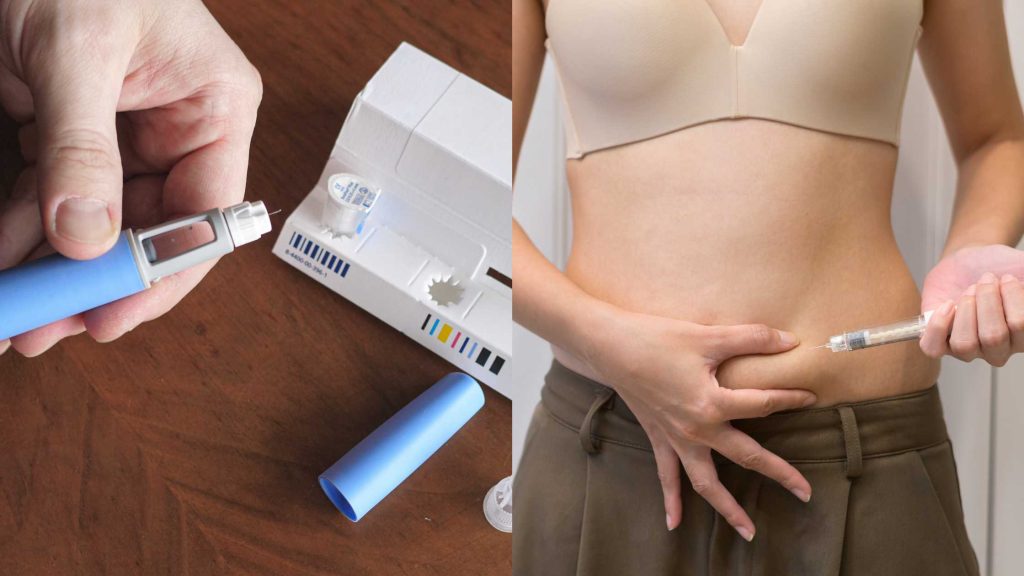Understanding Fat Reduction
Fat Reduction Basics
Fat reduction refers to medical procedures, such as surgical liposuction, laser liposuction, and tummy tuck, aimed at removing or reducing unwanted fat deposits under the supervision of a cosmetic surgeon. It’s crucial for achieving a more defined, contoured body shape, especially after tummy tuck and surgical liposuction procedures targeting subcutaneous fat in areas like the buttocks. Unlike weight loss, which can shrink fat cells, fat reduction treatments such as liposuction procedure, tummy tuck, and invasive liposuction alternatives specifically target and eliminate fat cells from the body, often performed by a cosmetic surgeon.
Fat removal techniques have evolved, offering solutions like invasive liposuction alternatives and injections that don’t require surgery, bypassing the need for a tummy tuck by a cosmetic surgeon. These non-invasive methods focus on reducing stubborn fat pockets that resist diet and exercise. They are ideal for areas like the abdomen, thighs, and arms, targeting subcutaneous fat pockets for fat reduction treatments, akin to a tummy tuck.
Non-Invasive Options
Cryolipolysis stands out among non-surgical treatments. This method freezes fat cells, leading to their natural elimination from the body. Another popular technique is laser lipolysis, which uses laser energy to liquefy fat before it’s absorbed by the body.
Radiofrequency treatments also offer a non-invasive approach by using heat to target and reduce fat deposits. These options, including injections and fat reduction treatments like lipo, have gained popularity due to their minimal downtime and improved patient experience, along with reduced risk compared to surgical alternatives.
Surgical vs Non-Surgical
Surgical fat reduction, such as liposuction, physically removes fat from the body through incisions, enhancing the patient experience. While effective, lipo, a surgical fat reduction experience for the patient, comes with higher risks and longer recovery times. Non-invasive fat reduction treatments provide a safer option with less recovery time but may require multiple sessions for the patient to achieve desired results in surgical fat reduction experience.
Non-invasive treatments focus on subcutaneous fat—the layer of fat just beneath the skin. They are not designed for significant weight loss but rather for sculpting specific areas by eliminating stubborn fat pockets.
Weight Loss vs Fat Reduction
Weight loss involves decreasing overall body weight through diet, exercise, fat reduction treatments, or both, including surgical fat reduction for invasive fat. It reduces the size of all fat cells but doesn’t remove them entirely. In contrast, fat reduction eliminates certain fat cells from the body permanently.
Understanding this distinction is vital since even after achieving weight loss goals, some areas of excess fat may remain unchanged. That’s where non-invasive fat reduction treatments come in handy.
Lifestyle Impact
Maintaining results from non-invasive procedures, such as surgical fat reduction or other fat reduction treatments, requires a healthy lifestyle. Regular exercise and a balanced diet help prevent new fat deposits from forming in treated areas.
It’s important to note that while these treatments can remove existing fat cells, they don’t prevent new ones from forming if one gains weight post-treatment. Thus, commitment to a healthy lifestyle, alongside fat reduction treatments for invasive fat, is key for lasting outcomes.
Liposuction Basics
Surgical Procedure
Liposuction is a surgical procedure designed to remove fat from specific body areas. It targets fat that doesn’t go away with diet and exercise. Surgeons use a device to suction fat out, making it less invasive than other surgeries but still requiring recovery time.
People often choose liposuction, an invasive fat removal technique, for its effectiveness in shaping the body. However, it’s not a weight-loss solution. Instead, it’s best for removing small to moderate amounts of fat.
Target Areas
Liposuction, an invasive fat removal procedure, is most effective on the abdomen, buttocks, and thighs. These areas often hold stubborn fat that resists other reduction methods. The procedure can also improve contours on the arms, neck, and back by removing invasive fat.
The choice of target area for invasive fat removal depends on individual needs and the surgeon’s assessment. Each area requires careful consideration due to different skin types and fat compositions.
Recovery Period
Recovery from liposuction varies by person and the extent of the procedure. Most people need a few days off work and several weeks before returning to normal activities. During this time, wearing compression garments helps reduce swelling and supports healing.
Pain, bruising, and swelling are common post-surgery but usually subside within a few weeks. Full recovery and final results may take up to six months as the body adjusts.
Cost Implications
The cost of liposuction can be significant, depending on the treated areas’ size and number. Prices include surgeon fees, anesthesia, facility costs, and aftercare. Insurance rarely covers liposuction as it’s considered cosmetic surgery.
Prospective patients should discuss all costs upfront with their surgeon to avoid surprises. Financing options or payment plans might be available through some clinics.
Noninvasive Alternatives Overview
Less Aggressive
Noninvasive alternatives to liposuction offer a gentler approach to fat reduction. Unlike traditional liposuction, these methods do not require incisions or general anesthesia. This means patients can avoid the risks associated with surgery and enjoy a quicker recovery time. Most people can return to their normal activities almost immediately after treatment.
These alternatives focus on reducing fat layers through external treatments. They are an excellent choice for those who prefer minimal discomfort and no downtime.
Popular Treatments
CoolSculpting
CoolSculpting uses controlled cooling to target and eliminate fat cells without damaging the surrounding tissues. It’s a great option for treatment areas like the abdomen, thighs, and flanks. The procedure involves no needles, making it a preferred choice for patients with low pain tolerance.
Patients often see results within a few weeks as the body naturally processes and eliminates the dead fat cells. The lack of need for anesthesia or a recovery period allows individuals to continue with their daily routines immediately after the session.
truSculpt
truSculpt employs radiofrequency energy to heat and destroy fat cells in targeted areas. This method is versatile, treating various parts of the body with precision. It’s particularly effective for those hard-to-reach areas that might not be suitable for other types of noninvasive treatments.
The treatment is well-tolerated by most patients, described as feeling similar to a hot stone massage. There’s typically no recovery time required, making it another convenient option for busy individuals looking to reduce unwanted fat.
SculpSure
SculpSure utilizes laser technology to heat fat cells under the skin while keeping the surface cool. It targets adipose tissue effectively without invasive alternatives like surgery. The procedure is fast, usually taking around 25 minutes per treatment area, making it ideal for people on-the-go.
Like other noninvasive procedures, SculpSure allows patients to resume their usual activities right after treatment, highlighting its convenience and efficiency.
Deep Dive into Noninvasive Methods
CoolSculpting Insights
CoolSculpting stands out as a leading noninvasive treatment. It uses cryolipolysis, a process where cold temperatures target and kill fat cells. This method does not require anesthesia or incisions, making it a hassle-free option for many. It’s particularly effective on the abdomen, thighs, and under the chin. Patients often see results within a few weeks as the body naturally eliminates the dead cells.
The technology behind CoolSculpting ensures that only fat cells are affected, leaving surrounding tissues unharmed. This precision contributes to its popularity among those seeking a safer alternative to traditional liposuction.
TruSculpt and SculpSure
TruSculpt utilizes radiofrequency technology to heat and destroy fat cells. This method is versatile, targeting various body areas with minimal discomfort. The heat also encourages collagen production, which can result in tighter skin post-treatment.
On the other hand, SculpSure employs laser technology to achieve similar outcomes. The lasers raise the temperature of fat cells until they’re damaged beyond repair. Both treatments offer a noninvasive way to reduce fat without the need for general anesthesia or recovery time.
BodyTite and SmartLipo
BodyTite and SmartLipo take noninvasive fat reduction further by incorporating skin tightening benefits. BodyTite uses radiofrequency-assisted lipolysis (RFAL) to melt away fat while contracting the skin. It’s an effective solution for those looking to address both excess fat and saggy skin simultaneously.
SmartLipo combines laser lipolysis with gentle suction to remove liquefied fat cells from the body. The laser energy also stimulates collagen production, leading to firmer skin over time. Both technologies provide a dual benefit: reducing unwanted fat and improving skin elasticity.
Comparing Invasiveness
Surgical Nature
Liposuction stands out for its surgical approach. This method requires incisions, making it invasive. Patients often experience considerable downtime. They must prepare for both the physical and emotional impact of surgery.
Noninvasive treatments, however, bypass these challenges. They target fat cells without breaking the skin. This key difference marks a shift towards gentler fat reduction methods.
Trauma Reduction
Noninvasive options boast minimal trauma. Unlike liposuction, they don’t involve cutting or stitches. This means less risk of infection and quicker recovery times.
Patients appreciate the reduced side effects. Bruising and swelling are significantly less common with noninvasive methods. For many, this makes noninvasive treatments more appealing.
Anesthesia Absence
General anesthesia is not needed for noninvasive procedures. This fact alone alleviates many concerns associated with traditional liposuction. The risks of anesthesia complications are avoided, offering peace of mind to patients.
Local numbing agents might be used in some cases. Yet, they carry far fewer risks than general anesthesia. This further underscores the safety of noninvasive approaches.
Analyzing Results
Immediate Impact
Liposuction offers immediate and dramatic changes to one’s physique, targeting specific areas like the arms or abdomen. This process physically removes fat cells from the body, offering a quick transformation. In contrast, non-invasive alternatives work gradually. These methods use energy waves to target and transform fat cells on the surface without breaking the skin.
Patients often see noticeable results over weeks or months. The reason is that these treatments rely on the body’s natural processes to eliminate altered fat cells. While not instant, these changes are significant over time.
Session Count
Non-invasive treatments typically require multiple sessions to achieve desired goals. Each session helps further reduce fat in problem areas, making them less invasive but more prolonged in achieving results compared to liposuction.
The number of sessions varies based on the area treated and the individual’s response to treatment. Some people may experience their goals after just a few appointments, while others might need more. This aspect is crucial when considering both cost and commitment to the process.
Fat Cell Dynamics
Both liposuction and non-invasive methods offer permanence in fat cell removal. Liposuction does this by physically removing cells from the body. Non-invasive alternatives, meanwhile, help destroy fat cells which are then naturally eliminated by the body over time.
It’s important to note that while the removed or destroyed fat cells do not return, new ones can form if one gains weight. Therefore, maintaining results requires a healthy lifestyle regardless of the method chosen.
Downtime Differences
Recovery Time
Traditional liposuction often requires a lengthy recovery period. Patients might need weeks to fully recover. This contrasts sharply with non-invasive alternatives, where downtime is minimal.
Non-invasive methods boast little to no downtime. Many patients return to daily activities within days, sometimes even minutes or hours after treatment. This significant difference can greatly influence a person’s decision between the two options.
Daily Impact
The impact on daily life and work is another critical consideration. Liposuction’s recovery might demand time off from work and restrict physical activity. It can disrupt routines for an extended period.
Conversely, non-invasive procedures allow for a quick return to work and everyday life. The minimal recovery time means less disruption and more convenience for those leading busy lives.

Side Effects
Liposuction’s side effects can include bruising, swelling, and discomfort requiring careful management during recovery. Patients often need prescribed pain relief and may face limitations in movement as they heal.
Non-invasive treatments generally have fewer side effects. Some patients experience mild redness or discomfort, but these symptoms are typically short-lived. The care requirements post-treatment are also less demanding, making it easier for individuals to manage their recovery independently.
Choosing Your Body Contouring Path
Desired Results
When contemplating body contouring, it’s crucial to pinpoint your desired outcomes. Liposuction offers immediate and dramatic changes, particularly for areas like the thighs or a double chin. However, noninvasive methods such as Evolve Transform provide gradual improvements without surgery. These options tighten skin and reduce fat layers over time.
Noninvasive treatments appeal to those seeking subtle enhancements without the downtime. They work best for minor fat reduction and skin tightening. Understanding what each method can deliver helps in aligning expectations with possible results.
Recovery Time
Recovery is a significant factor in deciding between liposuction and noninvasive alternatives. Liposuction requires weeks of recovery, impacting daily activities. On the other hand, noninvasive procedures like Evolve Transform allow patients to return to normal routines almost immediately.
For individuals who cannot afford lengthy downtime, noninvasive options are preferable. They offer convenience and less disruption to personal and professional life. This makes them an attractive choice for busy individuals.
Cost Considerations
Cost is another critical aspect when choosing your body contouring path. Generally, liposuction carries a higher upfront cost due to its surgical nature. Noninvasive treatments might seem more affordable initially but may require multiple sessions to achieve desired results.
Budgeting for either option requires understanding the total investment needed to meet your goals. Sometimes, a combination of both methods yields the best outcome within your budget constraints.
Health Status
Your current health plays a pivotal role in determining the suitable body contouring method. Liposuction is invasive and poses higher risks compared to noninvasive techniques.
Consulting with a board-certified cosmetic surgeon is essential before making any decisions. They can assess your health status and recommend the safest and most effective option for you.
Realistic Expectations
Setting realistic expectations is fundamental in cosmetic procedures. No method offers a one-size-fits-all solution. Results vary based on individual body types and lifestyle factors.
A thorough consultation with a cosmetic surgeon helps set achievable goals. It ensures you understand what each procedure can realistically accomplish.
Planning Your Consultation
Qualified Provider
Choosing a qualified and experienced practitioner is crucial. It ensures you receive the best advice and care. Look for providers with a strong background in dermatology or cosmetic surgery. They should have a proven track record with non-invasive liposuction alternatives.
Patients must research their provider’s qualifications. Check for certifications and reviews from previous patients. A reputable dermatology clinic will openly share this information.
Consultation Questions
Prepare a list of questions before your consultation. This preparation helps you understand the procedure better and set realistic expectations.
-
What procedure options are available for my target area?
-
Can you describe the patient experience during and after the treatment?
-
What outcomes can I realistically expect?
-
How many sessions will I need to achieve these outcomes?
-
What is the recovery process like, including potential swelling or downtime?
Asking these questions gives you a clear view of what to expect. It also shows the provider that you are informed and engaged in your treatment plan.
Lifestyle Discussion
Discussing your current lifestyle and maintenance plans post-procedure is vital to sustain results. Providers can offer guidance on exercise and healthy lifestyle choices that complement the treatment.
It’s important to understand that these procedures are not substitutes for weight loss or a healthy lifestyle. Instead, they can enhance the results of your hard work.
Providers may suggest specific exercises or diet adjustments to maintain your new contour. Following their advice is key to long-lasting results.
Closing Thoughts
Exploring non-invasive liposuction alternatives opens a world of possibilities for fat reduction without the need for surgery. You’ve seen the options, from cool sculpting to ultrasound fat reduction, each with its benefits, downtime, and results. Choosing the right path for your body contouring journey depends on your goals, lifestyle, and how you weigh invasiveness against outcomes. It’s clear that technology has paved the way for safer, more convenient methods that promise significant results without going under the knife. As you plan your consultation, remember to discuss these alternatives in detail with your specialist. They’ll guide you based on their expertise, ensuring you make an informed decision that aligns with your body goals. Ready to take the next step towards a contoured physique without the surgical downtime? Reach out to a certified professional today and start your journey to achieving your desired look with confidence.
Frequently Asked Questions
What are noninvasive liposuction alternatives?
Noninvasive liposuction alternatives include treatments like cryolipolysis, laser fat reduction, and ultrasound fat reduction. These methods do not require incisions or anesthesia, offering a fat reduction solution without the downtime of traditional liposuction.
How do noninvasive body contouring methods work?
Noninvasive body contouring methods target and eliminate fat cells through various technologies such as cooling (cryolipolysis), heat (laser therapy), or sound waves (ultrasound). The destroyed fat cells are then naturally processed out of the body.
Can I expect immediate results from noninvasive procedures?
Immediate results should not be expected with noninvasive procedures. It typically takes several weeks to months to see noticeable results, as the body needs time to eliminate the treated fat cells.
What is the downtime for noninvasive fat reduction treatments?
There is minimal to no downtime required for noninvasive fat reduction treatments. Most people can resume their daily activities immediately after their session.
How do I choose between liposuction and noninvasive alternatives?
Choosing between liposuction and noninvasive alternatives depends on your goals, medical history, and desired recovery time. Noninvasive options are best for those seeking minor adjustments without surgery, while liposuction may be better for more significant fat removal.
What should I discuss during my consultation for body contouring?
During your consultation, discuss your body contouring goals, any medical conditions you have, and your expectations for recovery and results. This will help determine the best treatment plan tailored to your needs.
Are results from noninvasive fat reduction permanent?
Yes, results from noninvasive fat reduction can be permanent as long as you maintain a stable weight and healthy lifestyle. The treated fat cells are eliminated from the body and cannot regenerate.





